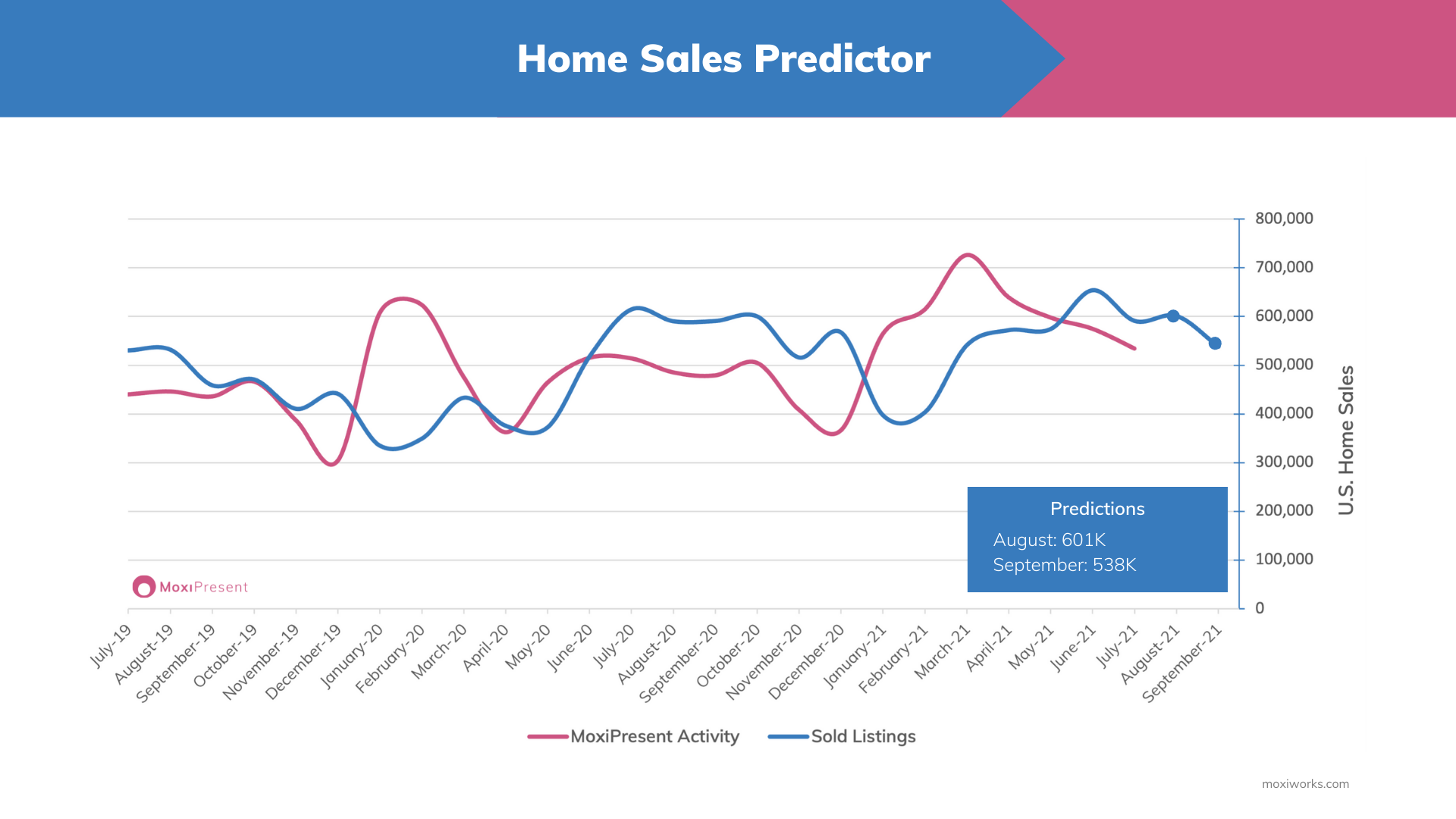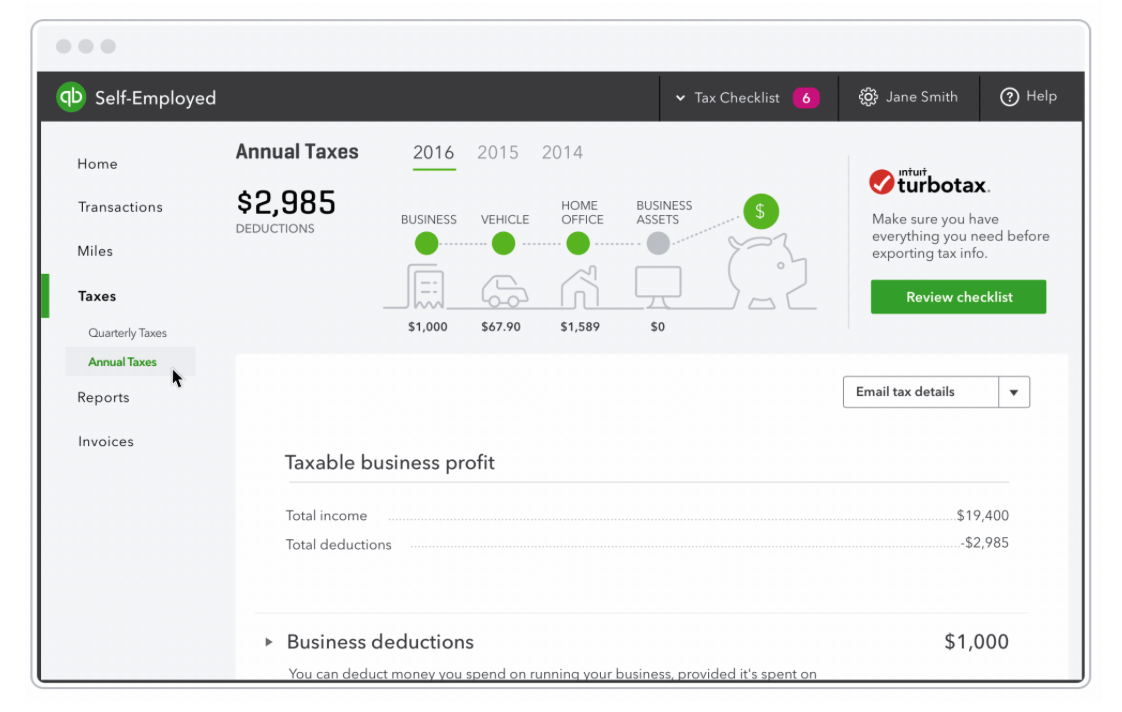MoxiWorks Announces New Homeownership Portal Aimed to Help Real Estate Professionals Boost Loyalty and Win Customers for Life

The portal will empower agents to stay in flow with clients throughout the entirety of their homeownership lifecycle with real-time guidance, relevant advice, and local resources; curated by each brokerage and personalized by agents
SEATTLE, WA (May 4, 2022) — MoxiWorks, the real estate industry’s leading technology platform for real estate brokerages, announced today a homeownership portal that will complement their robust suite of solutions to help brokers and their agents sell more homes. The portal will be a one-stop shop for homeowners.
Real estate professionals will be able to guide their clients to buy, sell, move and manage their home throughout the lifetime of their homeownership. This will include dedicated transaction portals where a buyer or seller can collaborate with their real estate agent, mortgage broker, insurance agent, and anyone else supporting the transaction process. The portal will also connect directly to a brokerage’s existing tech stack and is designed to provide a comprehensive and personalized customer experience throughout the transaction and homeownership journey for everyone involved.
“We built the MoxiWorks suite of products around sphere methodology,” said York Baur, MoxiWorks CEO. “The power of your sphere over cold leads is unmatched. The industry has been asking for a one-stop-shop and we’re excited to create something that will make it easy, automated, and accessible for both the real estate professionals using it as well as their clients.”
With the MoxiWorks homeownership portal, agents can collaborate with clients in a personalized space and connect them with other expert resources in their communities like loan officers, inspectors, or other services.
“This offering not only preserves the relationships between brokers and agents, and agents and clients, but it also helps maintain those relationships at scale,” said Baur. “The average real estate agent on MoxiWorks’ platform has 400 relationships they continuously nurture. Being able to have close, personalized interactions with that many contacts, over the lifetime of homeownership, will be a game-changer.”
The homeowner portal will be powered by Milestones Labs, a pioneer in digital customer experience. This portal will bring together a team of experts, from brokers and agents to ancillary services like title and mortgage. These custom portals are tailored specifically to the customer and nudge them through the necessary tasks while eliminating all the noise from others in our industry. A portal can be automatically spun up for a buyer client, sellers, or just contacts wanting to maintain their property for the long haul.
“We are thrilled to partner with MoxiWorks to serve the evolving needs of the real estate community,” said Dustin Gray, Milestones CEO. “MoxiWorks has a proven track record delivering powerful technology at scale while remaining steadfast in its mission to help industry professionals thrive. Together, we will help brokerages serve the next generation of homeowners – by leveraging technology to deliver personalized client service before, during, and after the transaction.”
To learn more and join the waitlist, visit moxiworks.com.
About MoxiWorks
MoxiWorks is a comprehensive open platform system for residential real estate brokerages that serves over 800 brokerages and 400,000 agents nationwide, accounting for more than 20% of the transactions in the U.S. MoxiWorks’ customer retention over the past seven years stands proudly at 97%. Their integrated tools are centered on sphere methodology that increases agents’ repeat and referral business by 54% while lowering overall technology, training, and support costs for the brokerage. The open platform known as the MoxiCloud has tools from more than 150 partners that integrate to create unique brokerage solutions.
MoxiWorks – Let’s sell more homes together
###
What Seasonality? Home Sales Hold Strong

Summer is winding down in many parts of the country. Kids are going back to school while professionals head back to the daily grind. One thing not winding down? Home sales.
There were nearly 600K homes sold in July with 591K home sales, meaning our prediction was within 1%. While that is a 10% decrease in home sales from June to July and a 4% decrease YOY that is still a very strong month of home sales and it looks like it should stay steady over the next few months, really just throwing our usual seasonality for a loop.
So, what’s ahead for August and September?
Predictions
Based on activity inside our MoxiWorks products we predict there will be a 2% increase in home sales in August with 601K homes sold followed by a 10% decrease in September with 538K home sales.

While that would mean a 9% decrease for September YOY, when comparing it to a more normal year like 2018 or 2019 that’s a 27% and 17% increase respectively for this time of year which definitely points to this wonky year of home sales continuing.
So, what about home prices?
The big thing we’ve been talking about around the virtual MoxiWorks lunch table this past month is less about the waning inventory (even though that is of course still a concern) and more about current home prices and interest rates. Interest rates are still at a record low, but, at some point, they will start to increase again as economic principles come into play. Until that happens this will remain a seller’s market with record breaking home prices that are spooking buyers. Because these buyers are spooked another thing we are keeping our eye on is the increase in non-traditional home buying, i.e. iBuyers. Needless to say, there’s a lot happening and it will be interesting to see what these changes mean in the coming months. So how can you and your agents be ready?
Fall & Covid-19
We are of course not ignoring the Delta variant and what that might mean for the Fall and Winter months of home sales, but for now, our message remains the same. Protect yourself and your agents from whatever is coming our way by staying in flow with your sphere. Keep working for your future by staying in flow with your sphere now. If the last 16 months have taught us anything it’s that things can change at a breakneck pace and you don’t want to be left wishing you had kept your book of business fresh, nurtured and full of your future leads.
Until next month.
Hot housing market, with no indication of a cool down, for now.

In last month’s Home Sales Predictor article we said –
“Only time will tell if this flattening trend will continue or if we will see a spike later this year. Many of our clients have shared with us they are starting to see more listings in their area so maybe we will still see a spike? What trends are you seeing? Do you think we’ve seen the peak?”
And, it appears the flattening has not happened yet. In June there were a record-breaking 636K homes sold across the US. That’s 6% higher than our prediction and 24% higher year-over-year. In fact, that is the most homes sold in a month that we have seen since we started tracking this data back in 2016.
July/August Predictions
Looking ahead it appears the market will remain hot with a brief slow down expected for July (which is a historical trend) with 587K home sales. That would be an 8% decrease from June and a 4% decrease YOY. We then expect the market to pick right back up to 601K in August. If our prediction holds true that would be a 2% increase from July and a 3% increase YOY.
When talking with our data team this month about the Home Sales Predictor one thing we all agreed on was the fact that this is a weird housing market that really feels like the tip of a lot of interesting things happening in the world right now.
Especially for us here in the Pacific Northwest. We’ve been living in a market that was mostly closed for the last 15 months, it’s been shocking to see how much has changed in the last two. And, especially in the housing market. A lot has been unpredictable and while we are confident in the data at our fingertips, time will only tell how much wackier this market may get.
Institutions vs. Homebuyers
Things are starting to look up in the economy as we return to work, travel and entertainment. There are even signs things may change for the better in terms of the housing inventory as lumber prices start to stabilize and housing starts will finally be reviving, but we still have an uphill battle to climb as more and more millennials aim to get into the homeownership game.
One of the biggest things at play that we are focusing in on is how much institutional buying is putting pressure on the already shrinking existing home inventory. We’ve been talking for months about the listings shortage vs. inventory shortage, but new data is causing us to take another look when an already pressured consumer market is seeing more pressure from the resurgence of the iBuyers (more on that below) and this further immergence of the institutional buyers that are buying homes and taking them off the market by turning them into rentals.
According to a recent Redfin report investors spent a record $77 billion on homes over the past six months compared to the $55 billion that was spent in the second and third quarters of 2020. That’s 1 of every 7 U.S. homes in the first quarter where in the previous three quarters investor bought closer to 1 in 10 homes (Source: HousingWire).
That same report shared that “Most [investors] focused on single-family homes, which made up the biggest share of acquisitions and first-quarter growth, year over year. Nearly 39,000 of the 55,000 homes investors bought in Q1 were single-family properties, up 4.8% from last year” and that among those buyers were Invitation Homes and American Homes 4 Rent, both “single-family-rental behemoths.” (source: The Real Deal)
So while concerns have been flying around about the resurgence of iBuyers it’s important to note that iBuyers are still only roughly 50% of the way back to their pre-pandemic levels with only 4,383 homes purchased in Q1 of 2021 and only account for 0.5% of homes sold across the U.S. making them nowhere near an immediate threat to our housing shortage.
What does the future hold?
The market will likely continue at this velocity, but the concerns around intuitional buyers squeezing our inventory opportunities will remain top of mind. Especially for how it can disproportionately impact the lower and middle class and especially for minorities who oftentimes lack the generational wealth to get their foot in the door, especially in a crazy market like this one.
And it’s not a great sign when, according to HousingWire “investors gobbled up the largest share of lower-priced homes in the first quarter…One of every five low-priced homes that sold in the U.S. (20.8%) was purchased by an investor, compared to 12.5% of high-priced homes and 11.3% of mid-priced homes.”
So, what can you do?
Use your power as a real estate professional to help overrepresent the underrepresented. Try and focus on building your sphere with families to help get them into homes and start building wealth and generating more opportunities for future growth. The more we can build diverse communities the better for society and the better for our future as an industry. Look for the opportunities to make positive change in your community while making sure all the homes on our street aren’t bought up by investors. Be that valuable resource for all of your contacts in your sphere and educate them on the benefits of buying and selling a home in their market to help continue to foster movement and transactions across the industry.
Sources:
- https://therealdeal.com/2021/05/21/institutional-buyers-are-flooding-single-family-market/
- https://www.housingwire.com/articles/investors-are-buying-up-single-family-homes-across-the-us/
- https://www.redfin.com/news/ibuyer-real-estate-q1-2021/
- https://www.vox.com/recode/22407667/home-sales-boom-rent-housing-single-family-rental
- https://www.wsj.com/articles/lumber-prices-are-way-downbut-dont-expect-new-houses-to-cost-less-11626260401
The Home Sales Predictor is a brand-new set of prediction data that dives into the number of presentations created and the correlated number of U.S. home sales. This data is provided by MoxiWorks with insights from their MoxiPresent product.
Get our Home Sales Predictor Monthly Report delivered to your inbox!
Our Growth Leads to Your Value: A letter to MoxiWorks customers

Dear customers,
There’s increasingly more horsepower behind the rate of innovation and growth of our offerings here at MoxiWorks and we’re thrilled to share the benefits of that growth with our customers aka you. With your support, we continue to push progress of the industry as a whole with our suite of products and services we offer. And as we grow, our focus remains to provide continued benefit to you, our customers as we innovate and establish new integrated partnerships.
From Open Platform to Open House
We believe that no two brokerages are alike, which is why we’ve built the industry’s only true open platform, which gives you – the broker – the power of choice. Working with a truly open platform means even though you and other companies may have the same tech partner in us, you’re still able to provide unique value to your agents. Each brokerage has the ability to mix your own unique cocktail of technology and fill it with your own unique content and branding geared at a specific market, which drives the success of your agents and enables you to advance your value proposition and stand out in your market. This allows you to grow your technology strategy along with your company and we’re right there with you along the way.
All our customers have access to the same SaaS products and open platform that we have created. Therefore, adding new customers means added revenue, allowing us to expand our ability to build and enhance those products, benefitting all customers equally. It’s a win-win situation for all.
Getting Faster, Better, Stronger Together
Yes, bringing on new customers means we had to grow our team and we’re proud to say we’ve increased the number of full-time Moxians by 25% since the beginning of the year – we’ve already hired 35 new employees so far – and we continue to bring on talent across all functions of the organization. The result is that we’re more capable than ever for all our customers, you included.
The MoxiWorks philosophy has always been rooted in driving the industry forward through collaborative investment in innovation and that only continues to strengthen. Our initial investors/customers: Windermere, Long & Foster, Howard Hanna helped fuel our growth strategy to get us where we are today and continue to push us to where we can get tomorrow. Along with over 150 integrated partnerships and new innovative product offerings, we are bringing the benefit back to you, our customers every day.
We look forward to continuing to support each and every one of our customers in a unique way that drives their business forward. Let’s sell more homes together.
Regards,
York
How To Get Your Real Estate Agent Blog to Stand-out

June 7, 2020 | Mercedes Santiago, Marketing Coordinator
The world is filled with agents. And while you know how valuable you can be to your clients, they might need further convincing. A blog is a great way for you to stand out among your peers. An agent blog is your space on the internet to show your clients who you are, and how you’ll benefit them. But here’s the catch: The world is also filled with blogs.
So, how do you make your blog stand out from the rest? We’ve got some tips to help you differentiate yourself from the rest, winning that client! They’ll thank you for your real estate expertise, your fantastic communication skills, and your stunning, content-filled blog.
Find your style
Your blog is the space to express who you are to clients and prospective clients. Some might think you are just helping clients buy or sell a home, but you know an agent-client relationship goes much beyond that. They are searching for an excellent agent, a friend, someone with expertise and attention to detail. After all, you are the one who plays a key part in determining what their future will look like.
Take a hard look at what makes you unique, and let that be expressed in your blog.


.
Take a look at the two agents’ work-spaces above. These two agents are both excellent in their field, however, have stark style differences. The fun part is, both agents will create eye catching and unique blogs with the things that make them, them! Their blogs will attract like-minded clients that will turn into lasting relationships beyond a purchase. And those relationships will create referrals and repeat business, growing your business for years to come!
Write, write, write!
Having a beautiful blog is great, but using it is even more important. You don’t want your prospective clients to click on your blog in attempt to see what you’re about, and all they find is a “Welcome to my blog!” post written three years ago. The tumbleweeds will roll across your blog and the homebuyer will click out fast. Create a realistic and manageable posting schedule for yourself, and stick to it.
Set aside a chunk of time to plan out multiple blog posts, so you don’t get in a writer’s slump searching for topics. If you’re posting once a week, try 30 minutes on the 1st of the month, and jot down 4-5 blog post ideas for the whole month. It’s that easy!
Now, when your prospective client enters your blog on your agent website, they’ll see a reliable and consistent agent who’s ready to take on the hunt for their future home.
Your blog is your tool
You’ve put work into your blog, and it’s your tool to use. You made this blog for your future and clients, so share it with them! Guide them towards a specific blog post you think they’d just love, or direct them to your testimonial page if they’re considering whether you’re the agent for them.
Not only will they love the engaging content, they’ll recognize your local expertise. It’s a win-win!
Get inspired
Your readers will doze off reading your blog if you dozed off writing it. Get excited about what you’re writing about and it’ll make a lasting impression. Need a little inspiration? One of our past blog posts has ideas for you to write about… (see how I casually used our own blog as my tool?) You can find those blog ideas right here! Remember, blogs will benefit your business if you put a little time and energy into it. Not sure where to start? Here are some tips on how to start a real estate blog. Now you have no excuses! Hop on your laptop, go into your agent website, create your blog, and get to writing.
Moxi Products: Why We Thrive on Agent Feedback
By Connor Baldwin, Technical Product Manager
As seen in Mile 62 eMagazine.
![]() Our goal as an organization is to make agents’ lives easier, and brokerages more profitable with our technology solutions. How could we possibly do that? There is such a wide variety of agents and brokerages in this industry, we could easily spend our entire year’s budget on user research and we still might not even get it right. So, you know what we do? We listen.
Our goal as an organization is to make agents’ lives easier, and brokerages more profitable with our technology solutions. How could we possibly do that? There is such a wide variety of agents and brokerages in this industry, we could easily spend our entire year’s budget on user research and we still might not even get it right. So, you know what we do? We listen.
How do we listen?
We do it actively. We take cues from the people who give us feedback and dig deeper into that topic they are discussing with us. Examples of this are in abundance at MoxiWorks. Our Customer Support team, a vital part of our company, do this with our end-user’s every single day. They receive feedback through a variety of mediums and immerse themselves into what our biggest user group is saying.
Then we have our Account Management team – they have calls with all of our clients every single week and are always ready when something urgent comes up. They talk to some of the most important people at our client brokerages; the people who know and care about their agents as if they were family. We also have our Sales team talking to prospective clients to understand their potential needs, along with our Executives talking to partners and industry experts, and it all ends up back with us.
Our team (Product), then receives this expertly mined information and we analyze it. Once it has been analyzed, then we decide to spend some money and do user research on the things that this feedback has helped us deem as meaningful. This usually involves interviewing users and running usability tests. These are both time consuming, but they help validate our assumptions, give us new insight into the lives of our users, contribute to building out of extensive user personas, and help us address our user’s true pain points. These two exercises are essential to getting it right the first time, which saves everyone time and money.
Why do we listen?
This is an even longer list, so I will just talk about my three favorites.
One – we listen because we want to build brand loyalty. We want to strengthen our relationships with our client’s operators all the way down to their agents. It is important to us that they feel like they have a say in the evolution of our products. This shows them we truly value their opinions and it helps us grow with our clients. Hey, and maybe they will recommend us to a friend.
Two – we listen because we flat out want to build better products. These are our users, they know the products really well and they are associated with real world use cases. The information we get from them allows us to make valuable changes to our existing products and build badass new ones. This will help retain those who are near and dear to us, as well as add more folks to the Moxi family.
Three – we listen because we want to learn market trends. I know what you’re thinking, the third one is a little more specific than the first two. Cut me some slack though, I’m on the product team. The feedback we get from our various sources all has a ring to it. It signifies change in the industry. A basic example of this could be, “We want you to add/change this feature because there was a shift in the industry. Its original use is no longer helping our agents increase their productivity and our brokerages bottom line.” Ok, that was a poor example, but you get what I’m saying. All this feedback we receive paints a huge picture of the real estate industry and its volatility, and that is awesome, because that picture helps us not only plan for the future but drives us to innovate.
There is a phrase that is thrown around quite a bit in our company. It goes, “What got us here, won’t get us there.” This is especially relevant to gathering feedback from our users. Where simply letting feedback roll in from agents and higher-ups may have done the job two years ago, that is not the case now. In order for us to continuously improve our products we must find new ways to gather feedback. We must educate ourselves on interviewing users and finding the root of their problem. It is critical to set our users up to give constructive, contextual feedback. We would only be doing a disservice to our users and ourselves if we just stuck with the “Have Feedback?” prompt in product and called it a day.
Questions about Zestimates? Pick up the phone.

 By Tiana Baur
By Tiana Baur
We’ve said it before and we’ll say it again, Zestimates are the bane of being in the real estate business. They’re the unfortunate misfire in a consumer lead industry and that bell can’t be un-wrung. When reports came out that a Zestimate for a home was 700 percent off, it wasn’t surprising; we have learned to expect it.
The thing is, data integrity will be an issue for the foreseeable future. You can get upset about that fact or you can see the data for what it is really is: a starting point. That’s what Zestimates are. No more, no less. The world of real estate might not be able to pretend they have ceased to exist, but as consumers, we can all be smarter about the information they provide to us.
Pick up the phone and call your agent.
Some fun facts for you: The median error rate of Zestimates is five percent. That may sound menial as a percentage, but when computed with the median home sales prices, it can be tens of thousands of dollars lost to the bottom line, and that’s if you’re lucky. According to the Washington Post, “Zestimates are within 5 percent of the sale price 53.9 percent of the time, within 10 percent 75.6 percent of the time and within 20 percent 89.7 percent of the time, Zillow claims.” And people wonder why agents bristle when this topic is brought up.
Agents, of course, have access to information that no algorithm can. Zestimates can’t know what makes a home and neighborhood awesome. So, wouldn’t it be nice to find out what your home is really worth? A thoughtful, agent expertise-driven valuation is the only way to truly understand what your home is worth.
Pick up the phone and call your agent.
It’s not a revolutionary idea, just one that is way undervalued and underutilized. As you can imagine, MoxiWorks CEO, York Baur, had some words on the topic this morning, saying, “We have more than 100,000 agents that can provide you with a thoughtful hand-built evaluation for your home. If you don’t have access to one of those 100,000 agents, find someone that does.” He went on to say that, “As a man of tech, I don’t say this lightly: there is no replacement for hyper-local knowledge that your agent, your trusted advisor can give you. No algorithm will ever replace that vital, human piece of the puzzle.”
That home evaluation tool is called Moxi Present and you’ve likely seen a presentation built on it before. There were over 300,000 Moxi Present interactive presentations that went out in 2017. They showcase what the Zestimate was on all selected comparable properties to your current listing versus what they actually sold for. Want more info?
Pick up the phone and call your agent.
How to Automatically Track Your Mileage and Save Hundreds on Taxes

![]() By Maddie Jostol
By Maddie Jostol
Taxes are a pain. Real estate agents face unique challenges as independent contractors because you’re running your own small business. This makes taxes an even bigger pain.
It’s really common for agents to miss out on deductions because the tax filing process is so time consuming and frustrating. Especially when you file on a quarterly basis, the accounting responsibilities of running your small business start to take over. Have you ever thought about how much savings you’re missing out on because you didn’t take full advantage of the deductions available to you?
A few of the many deductions to look out for:
– Mileage tracking
– Business-related technology subscription fees
– Meals and entertainment when you meet with clients
– Home office (or desk fees)
We’re going to focus on mileage tracking because that seems to be a common one for agents to miss out on. We understand why… it’s a huge annoyance to write down your mileage and then remember what that trip was for later on. We all end up with endless images of our car dashboard on our phone. That’s not exactly what you want to see as you’re scrolling through photos of your niece’s soccer game last weekend. When it comes time to file your taxes, it isn’t even worth trying to sift through pictures and records of trips you took for business. That means you’re missing out on some hefty deductions, though.
The good news? There’s a better way. We came across QuickBooks Self-Employed a few months back and realized it’s the perfect tool for busy agents. It’s an accounting tool built specifically for independent contractors, so it tracks your mileage for you so you don’t miss out on any deductions. Tracking your mileage and filing your taxes has never been easier… trust us.
When you have QuickBooks Self-Employed downloaded on your smartphone, it will track your trip every time you drive (yes, it knows when you’re in the car). Go into your app, scan your recent trips, and simply swipe left for business or right for personal. QuickBooks Self-Employed will categorize those expenses accordingly, making tax filing a piece of cake.
It also tracks and categorizes your expenses, making filing Schedule C deductions easy, you can also snap a photo and file away receipts, and see a snapshot of your business finances at any time.
Want to try out QuickBooks Self-Employed? Users are finding an average of $4,340 in tax savings per year. Since they’re a partner of ours, we’re offering you 50% off your first year. Click here for more details and to get set up!
You can also find out more about QuickBooks Self-Employed below:
2018 Business Planning for Agents

 By Maddie Jostol
By Maddie Jostol
Real estate agents: Now is the time to start your 2018 business plan. The end of the year arrived quickly (as always), which has most of us reflecting on the past year and setting goals for the coming year. As an agent, what’s your plan for ensuring next year is even more successful than this one?
It’s time to start your business plan, set goals, and put the right tools in place that will get you headed in the right direction – towards financial success. Here are a few things you should be thinking about this time of year, including a handful of free resources to help you get a jump start.
Set your GCI goal
Goal setting is a key piece of the planning puzzle. It’s vital for you to know what you’re working towards in order to map all of your efforts towards meeting that goal. Your GCI (Gross Commissionable Income) goal is a cornerstone to your financial plan, so set it early on and create a plan to reach it.
For those of you who are Moxi Engage users, make sure you enter your GCI goal into your Moxi account. This will show you the progress you’ve made towards your goal throughout the year. This transparency allows you to manage your time and finances more effectively. Want to learn more about this? You can in our help center.
Get a system in place
Get all of your processes in place so you can start the year off on the right foot. This includes a reliable accounting system and a smooth process for tax filing. As independent contractors, agents face unique challenges in tracking their expenses and filing quarterly taxes. Make sure you know what tools to use and which deductions to look out for. Want some tips? Download our Agent’s Guide to Stress-Free Taxes.
Our recommendation for 2018 is QuickBooks Self-Employed, an accounting app built specifically for independent contractors. It’s the perfect solution for busy agents. QuickBooks Self-Employed automates expense tracking, mileage tracking, and digital receipt storage and categorization. All of this is done easily on your smartphone, while on-the-go.
To give you a head start, we’ve partnered with QuickBooks to offer you a full year of QuickBooks Self-Employed for 50% off.
Make a plan
Whether you’re already starting your plan, or you’ve never created a business plan before – now is the time.
Join us for a free webinar on Tuesday, December 19th. We’ll have experts including Eric Thompson, Co-Founder of Windermere Leadership Academy and President of Windermere Services CO, and Charlie Snyder, Real Estate Specialist at QuickBooks. You’ll learn about getting started on your business plan, goal setting, saving money on taxes as an independent contractor, and managing your finances and business expenses throughout the year. They’re ready to bring you tools, templates, methods, and tips to help you be financially successful in 2018.
Agents: This is how much money you’re losing each year


By Tiana Baur
Every single tax deduction you are or are not allowed to take is impossible to know without a helping hand. If you aren’t utilizing an accounting or tax management system, it means you’re losing a lot of money. And by a lot we mean thousands of dollars that could be in your pocket instead. Avoid overpaying on your quarterly and year end taxes with these tips:
1. Mileage – over $7,000 in deductions
You drive a lot, spending your days driving between properties, appointments and shuttling your clients. Sometimes you probably feel like a glorified Uber driver. How do you determine whether to go with the standard mileage deduction or track all your auto-related expenses?
For those who drive more than 10,000 miles per year, the IRS requires you to keep a detailed log in order to claim this deduction. It needs to include date, time, mileage and purpose of the trip. Do you use an app to track all of this? Even if the answer is yes, there’s a better app out there. QuickBooks Self-Employed is a tool that helps users track an average of $7,393 in mileage deductions per year. It automatically captures everything you need with the click of a button.
2. Meals and fun – save over $4,000 a year
You can deduct meals as a business expense in two forms: 1.) When you are travelling on business and 2.) When you are dining with clients or with other professionals for the purpose of conducting business or generating referral business. With these, you’re allowed to deduct 50 percent of your total expense, which includes tax plus tip for the meal.
Many agents save receipts in boxes and haphazardly enter them into spreadsheets or give them to an accountant later, but this leads to loss of money. QBSE streamlines this process. Simply snap a photo of your receipt with your QBSE smartphone app to digitally store it with your transactions. This process helps users save an average of $4,340 per year.
3. Marketing and ad spend
Online and social media advertising costs are quickly becoming a big part of agent spend. Agents are expected to do more for their listings than they ever have before and they need the tools to effectively do it. Did you know that production costs like writing and design fees are also deductible? This includes website design and hosting fees, search engine marketing, pay per click advertising, video production, and any other IT-related costs.

4. Home office or space
Do you have a home office or a dedicated space to work? If you do, you’re eligible for a home office deduction, even if you also have office space at your broker’s office — unless you’re deducting desk fees already.
5. Desk Fees
Your desk fees are deductible regardless of your brokerage. With QBSE, whenever you pay that desk fee, you can set a rule to automatically categorize this expense. This however is only an option if you aren’t already doing the home office deduction.
6. Big purchases
Stationary, photocopies, and any other consumables needed to run your business are deductible. The ones you need to make sure you deduct are the big ones: laptops, phones, furniture, copiers, etc.
7. Fees, Licenses, etc.
Annual fees are common costs of doing business and are deductible. In real estate, that means your state license renewal, professional memberships, and MLS dues. Also, you can deduct real estate taxes necessary for your business, but not self-employment taxes.
8. Education and travel
Given rapid industry change, continuing education is imperative. It’s also a requirement in most states. If you need to travel to attend an event or meet with a coach, make sure to track all the information correctly to ensure that you’re compliant with the IRS. One way to do that is by linking your banking accounts with QBSE. As soon as you incur an expense associated with travel, tap a button to categorize it in one of the IRS approved categories.
9. Tools and services
Any software needed to run your business is fully deductible, including subscription services. Products such as QuickBooks Self-Employed not only help you automatically track your expenses and mileage, but may be fully deducted as well.


 Facebook
Facebook
 X
X
 Pinterest
Pinterest
 Copy Link
Copy Link